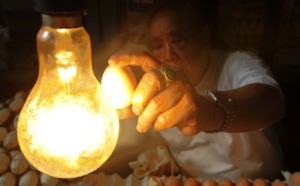 China Molybdenum plans to build a major commercial tungsten reserve. A move that is seen by analysts as a bid to stem further price falls of the oversupplied metal and to profit from a potential price recovery.
China Molybdenum plans to build a major commercial tungsten reserve. A move that is seen by analysts as a bid to stem further price falls of the oversupplied metal and to profit from a potential price recovery.
Such a stockpile was likely to take a long time to build, they said, while adding it would help create a price floor for tungsten, a hard industrial metal used in products ranging from light bulbs, jewellery to military equipment.
“As the second-largest tungsten producer [in the world], China Molybdenum may be using this strategy to prevent prices from falling even further,” Julia Ralph, commodities consultancy CRU Group’s principal consultant in Hong Kong, told the South China Morning Post. “With the billion yuan, China Molybdenum’s purchase price may [average] 65,000 yuan a tonne, [a level where] very few miners would want to sell materials at the moment. However, by pursuing this strategy, [it] can draw the line for the bottom of the price.”
Henan-based China Molybdenum said it would use “self-raised funds” to finance a fund of up to 3 billion yuan to buy not more than 46,000 tonnes of the metal from the market, about a third of China’s total output last year. “The board is of the view that the building up of a commercial reserve is equivalent to acquiring tungsten resources at [a] low cost … which would help strengthen the pricing power of the Chinese tungsten industry in the global market,” it said in a statement to Hong Kong’s bourse.
On Friday it announced it would issue short and mid-term notes totalling 4 billion yuan to repay borrowings, trade debt and bolster working capital. It had 9 billion yuan of cash at the end of last year. China Molybdenum has said the price of tungsten concentrate, a semi-processed material containing 65 per cent of the metal, is now below the production costs of most mainland producers, after dropping 16.5 per cent to 103,800 yuan a tonne, but that depletion of low-cost resources globally and rising production costs support its optimistic view of the industry’s future.
According to CRU, the price has fallen to about 70,000 yuan, less than last year’s lowest level of 78,000 yuan. Ralph said there were uncertainties in future supply. While China was the largest producer and reserve holder, its commercially extractable reserves might not be as large as suggested. “We can be fairly confident that a significant portion of the material classified as reserves is either too low in grade, or occurs in deposits too small to be mined commercially,” she said.
China produces 85 per cent of global supply, with China Molybdenum accounting for 11 per cent of China’s output last year.
Robert Baylis, a manager of minor metals research at London-based Roskill Information Services, said it was unusual move by China Molybdenum, “especially as it has one of the world’s lowest production costs for tungsten, a by-product of molybdenum, and is therefore less impacted by the low price environment”. “The problem is how China Molybdenum will unwind 46,000 tonnes,” he said. “Even if domestic output [falls] … drip-feeding 1,000 to 2,000 tonnes a year into the market means a very long-term payback.”
He said China Molybdenum’s move was likely based on a belief that low prices were not sustainable, and the stockpiling strategy resembled similar moves by large commodities trading firms such as Glencore. Baylis said he was not aware of a state stockpile of significant quantity, likely due to divergent views on the price level at which stock should be accumulated.
He said the oversupply had been caused by weakening demand on the mainland, and compounded by rising output in the past two years. “The oversupply situation can only be cured by better controls … but the government continues to increase the mining quota for tungsten and illegal mining is still happening, mostly smuggled to Vietnam to avoid value-added tax,” Baylis added.



